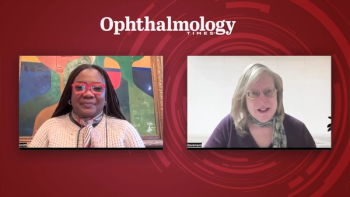
Astigmatism is common
Nearly one-half of patients who require vision correction are significantly astigmatic in at least one eye, according to a study sponsored by Johnson & Johnson Vision Care and published in Eye & Contact Lens.
Jacksonville, FL-Nearly one-half of patients who require vision correction are significantly astigmatic in at least one eye, according to a study sponsored by Johnson & Johnson Vision Care and published in Eye & Contact Lens.
To conduct this study, researchers obtained a database of spectacle prescriptions from a United Kingdom optical retail chain, and calculated the prevalence of astigmatism for various thresholds by eye and by patient. The analysis included patients aged 8 to 70 years. Astigmatism of 0.75 D was used as the threshold for analysis.
Of the 11,624 patients in the database, nearly one-half (47.4%) demonstrated significant astigmatism (greater than or equal to 0.75 D) in at least one eye, and nearly one-quarter (24.1%) exhibited significant astigmatism in both eyes. This proportion was higher for patients with myopia, of whom 54.9% demonstrated astigmatism in at least one eye, and 31.7% in both eyes. The prevalence of astigmatism was about twice as high in myopia as in hyperopia and increased with spherical refractive error.
Of the 47.4% of patients who had astigmatism, nearly one-half had significant astigmatism in one eye only.
"These findings provide useful information on the proportion of potential soft contact lens wearers requiring an astigmatic correction," said co-author Graeme Young, PhD, FCOptom, DCLP.
Newsletter
Don’t miss out—get Ophthalmology Times updates on the latest clinical advancements and expert interviews, straight to your inbox.













































